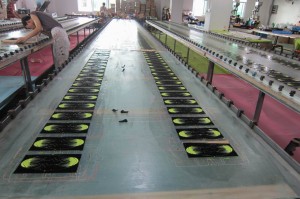It’s important to keep things in perspective and not lose sight of goals. When importing from China, keep your expectations manageable and manage your expectations. Managing expectations leads to a greater confidence and control of your projects.A few posts ago, I blogged on “Customer Service Expectations”. If you go to Joe’s Hamburger Grill, expect the kind of service a “greasy spoon” offers. A mature buyer considers variables such as; from whom you are buying, the people you’re dealing with, their capabilities, the capabilities of the business and cost of the service or product. People get frustrated about about how the customer service of the 18-year-old behind the counter. Don’t expect 5-star service from a dive. Know you’re going in to that hole for the food, not the ambiance. Having that kind of attitude, you’ll actually find aspects you appreciate of the service and overall experience.
Life is full of disappointments and if you don’t manage certain expectations, you’ll be singing the blues more often than not. When importing from China, this can happen to even the seasoned importer or buying department. They approach jobs with all sorts of ideas but not necessarily expectations that are fit for the situation.
Same Country, Different Location: “China is the same as us; the only difference is the people speak Chinese and their holidays are different. But they understand things the same way we do, they understand processes the same way we do here and their business practices are in line with what we do and expect”

It’s a factory, not a marketing agency. Use their advantages.
Now, no buyer may say or think this on the surface, but this is what their actions show. When odd manufacturing mistakes or misunderstandings happen, where the buyer cannot fathom why or how this is happening; keep in mind there is a reason China is cheaper. There is a reason it’s called a “developing country”. Buyers think the cost savings of manufacturing offshore is just a hidden plus and don’t take in to account, that, when importing from China, there is also the disadvantage of cultural and capability pitfalls.
Customer Service: A factory is like a big machine. They’re not known for striving to uphold their personal brand in head-spinning customer service. Don’t expect feedback, proactive updates, or even motivation from the factory at the start of the relationship. Even though you’re the buyer, you may be the one having to lay groundwork and inspire them to care about your case.
Mind-Reading Capabilities: “Doesn’t the vendor know my buyer is going to expect a nicer packaging than this?” How will the Chinese vendor know this if you haven’t educated them? When importing from China, don’t assume vendors should know anything about styles, brands, what’s hot, what’s not… educate them.
Cheap Price, Perfect Product: We need to low-cost, but it’s got to be a killer product. Low-cost in importing from China means cheap and cheap means garbage.
If you are ever fortunate to travel to China, visit their Wal Mart. Cheap in China is an all together different world than cheap in the Western World. Don’t view “low-cost” from your point of view, but how the factory is going to see low-cost? What portion of the product will lack? The decrease in the cost will lead to a decrease in the product in some form or another. Proceed with caution.
It’s no longer 1995 or even 2000 for that matter. Costs have gone up and for many industries it’s hard to offer value and still have an advantage based on only low price. Buy on value and offer value to your customers.
Your Own Personal Marketing Dept: “Why won’t my vendor pitch me some fun ideas?”.
Or have you ever said to a China vendor, “Suggest some cool items.”
Most likely these two requests have led to the sounds of crickets chirping. And then if or when they did pitch some ideas it usually wasn’t up-to-speed to what you had in mind. Information is not something that “flows” or goes back and forth in China.
Many times, Chinese suppliers don’t know your market, they don’t know your end-users and what’s hot or cool in China, is a different than where you live. Keep in mind, a humungous chunk of merchandise you see in the Western market, is nowhere to be found in China. And if it is found in the China market, it is much, much more expensive.
That’s not to say vendors cannot pitch; there are some quality vendors, traders and factories that can supply you with ideas. That is also usually going to reflect in the price per piece. A “thinking vendor” is a higher-priced vendor.
Use China and use it’s suppliers’ capabilities according to their advantage. You don’t use a chainsaw to hammer in a nail, and you’ll have trouble chopping firewood with a hammer. In the same respects, find the advantages of your Chinese supply-partners and let them fill in those gaps and even excel in those areas. Once you establish how to navigate certain responsibilities with a Chinese vendor, you’ll see them excel in that specific area. Over time, they’ll be able to offer their own input and branch out in to other areas of assistance.





China Sourcing Basics
Let me share what I've learned about China Sourcing.
Provide your email & receive free ebook: 40 Tips for Emailing China Suppliers.
I'll never spam. I'll share tips on Private Labeling, Sourcing and China Business.
You have Successfully Subscribed!